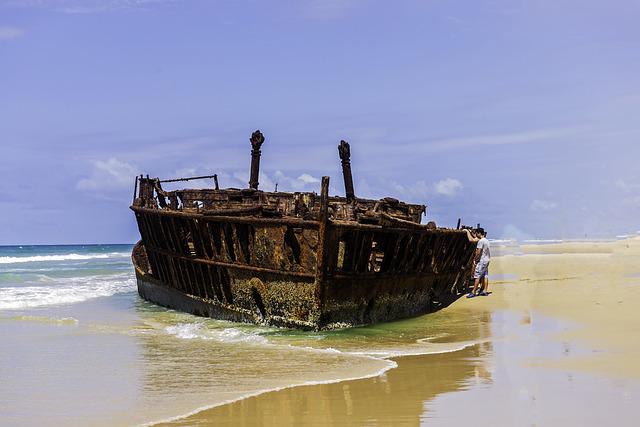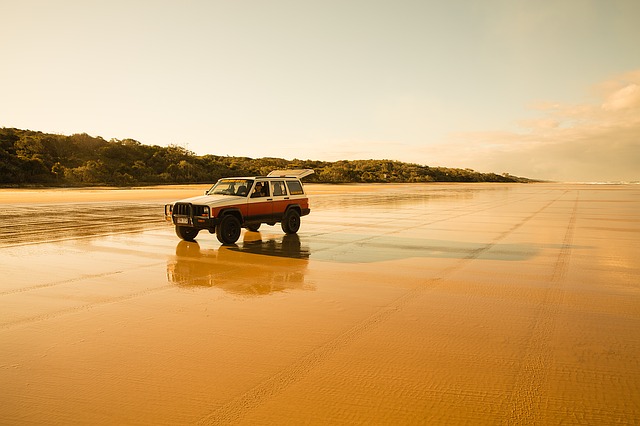When Captain James Cook first set foot on the island in 1774, he knew that this would be a place filled with paradise. He later renamed it after his ship’s dearly-lost Eleanor Fraser to honor her brave passengers who had died during their journey here – including some Butchulla people from Queensland!
The island has proudly displayed the mark of ancient occupancy for 5000 years, but it’s possible that more evidence exists. There were initially quite a few people living on this land in prehistory – up to 2000 or 3000 at certain times during winter when seafood was abundant (and other periods). Sites like middens prove human habitation here before European colonization; fish traps containing their remains can still be seen today among many others pieces left behind by different eras throughout history which speak volumes about what life was actually like.
The island’s original residents, the Butchulla people have been intimate with nature for thousands of years. They maintain a strong connection to their land and all that lives on it today-even if they can’t see you or hear your voice!
Human ancestors were once global consumers of seafood. Shellfish and fish were collected while hunting turtles or ingeniously trapping them in stone traps at low tide, with eels being hunt seasonally among other wildlife found across waterways like ducks which laid eggs that could be eaten raw depending on where they lived geographically; these days we know better than to do such things! Women pound flour from roots+bulbs (the source for both cooking fuel AND food) but also collect birds’ feathers as well: one type was used specifically.

Matthew Flinders’ journey along Australia’s east coast in 1802 was a crucial step for our understanding of how much land lies between Sydney and Point Cloates. In July, explorer collected water and wood while botanists went aboard to collect plant specimens from local flora which they would then study back home with their own plants as well! One person who survived this shipwreck had an interesting account that became embellished over time but also caused hostility towards Aborigines because it romanticized what happened without telling any truth about these people so there you go.
The Aboriginal people of Butchulla were soon after European settlement overwhelmed by diseases, weapons and food sources. Their resistance put up a strong fight but they couldn’t match the power that came with Europe’s advancements in science-based technologies like guns or ships which cut them off from most remote areas where their culture thrived before then being confined into an island mission settlement until 1904 when all remaining members were relocated throughout Queensland missions; some families stayed behind who had men employed as loggers/fishermen while others moved on because there was no other choice given how much time it took just getting around without any transportation options available outside what little land remained accessible via foot bridge Lottsville Road becomes runoff.
The history of logging in this region is an important part to understand, not just for what it means today but also because many people believe that without these industries we would be lacking something. Logging played a big role during colonial times when settlers arrived and began grazing their sheep on good pasturesland or cutting down valuable kauri pines which were shipped all over Europe for wood purposes such as ship construction – nowadays you can find those same trees somewhere else around Australia!
The history of Long Island’s mining and lighthouses are fascinating. The first major lighthouse, Sandy Cape Lighthouse was built in 1870; while Double Island Point Light got its start back when shipping became important to this region over 100 years ago-around 1884!
The history of Fraser Island is one that has been shaped by many different events, all which are interrelated in some way. The island was first discovered as a possible site for mining during the 1930s but it wasn’t until after World War II had ended that peace broke out on this territory due to an increase in tourists coming from Britain who wanted nothing more than tropical climate beaches with warm waters perfect for swimming or snorkeling every day they choose – if not at least while holidaying there!

The people of Fraser Island have been visiting this magical island for generations, but it wasn’t until the 1930s that tours and accommodations became available. Sandmining started off-island in 1982 leading to increased Australian interest; however with its listing as World Heritage Site since 1992 international tourists are coming more often than ever before! Nowadays we must balance our need preservation natural treasures like flora & fauna while still provide access so everyone can enjoy them too.
If you’re looking for a place to get away from it all, look no further than Fraser Island. The island boasts an abundance natural attractions: pristine fresh water lakes such as McKenzie and Boomanjin; crystal clear creeks – Eli Creek being one such example (and home of Australia’s largest native tree); Champagne Pools with their wonderful swimming rock-pools just waiting for YOU! There are also some other interesting things found on this beautiful destination that make up part or all its charm…like shipwrecks! One way we can enjoy these wonders is by camping next door at the Central Station camp site during our stay–just remember not leave anything behind so be sure take advantage.
Whether you’re an avid birdwatcher or just want to see some marine life, Fraser Island is the perfect destination. Home of thousands upon species and hostess large number in its warm waters that attract dugong, dolphins & turtles alike–the magnificent humpback whales with their young pass by on this island between August until November when they return back east across Bass Straight returning once more towards New Zealand!